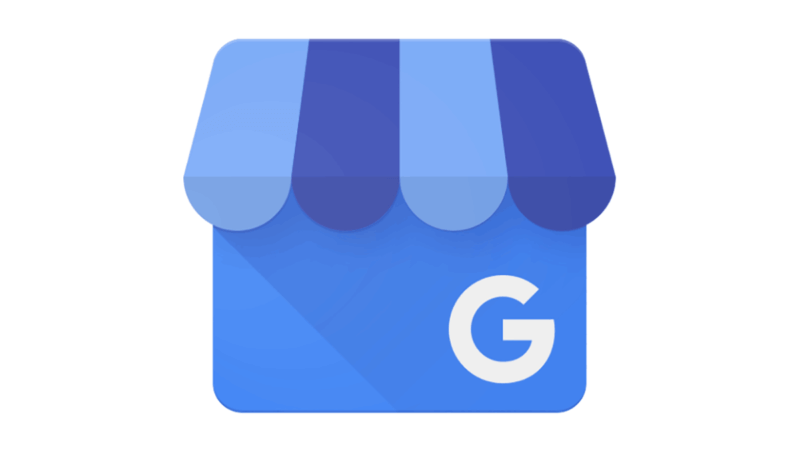On Launching An Online Marketplace To Buy And Sell Websites
Hello! Who are you and what are you working on?
We’re Dennis Schaecher, Paul Wilcox, and Bob Anderson, founders of The Hatchit Marketplace. Hatchit is an online marketplace for internet entrepreneurs to buy and sell web-based businesses and digital assets. We’re focused on helping entrepreneurs buy and sell websites, apps, domains, proprietary software, platforms, and similar tech-related assets.
It’s a “self-serve” set up. Business owners and brokers can post businesses and assets for sale through the “Sell a Business or Asset” link on our home page, showcasing their opportunities through text, images, documents, and video. Buyers can contact them about postings directly by email. Users are set up with a dashboard that they can log into at any time to manage their posts and view activity. Posts are currently free and can stay up on the site indefinitely.
We launched the site in January 2020, and the response has exceeded our expectations. The platform has attracted over 200 business listings worth $100+ million in value and 700+ followers on our social media channels. Site activity is continually increasing and buyers are becoming aware of the site as a “go to” destination for web investment opportunities. We’re also getting regular requests to expand into brick and mortar businesses and other types of investments.

What's your backstory and how did you get into entrepreneurship?
All three founders have backgrounds that include entrepreneurship and startup investing. We have collectively run a range of businesses that includes an educational catalog company, a magazine for twenty-somethings, an electric car share business, an energy consultancy, a mergers, and acquisitions firm, a bike rental shop, and a gourmet popcorn business. The partners were close friends at Middlebury College, founding a campus laundry service, Middlebury Wash ‘N Carry. “MWAC” is still active, run by students over three decades later. Here’s an article about MWAC from the Middlebury newspaper, circa 1988.

The partners believe entrepreneurship is a catalyst for positive change for individuals, communities, and societies, and we wanted to start a company that would make it easier for people to get into business for themselves. We ultimately hope to grow Hatchit so that it will extend beyond buying and selling web-based businesses, becoming a resource for many types of entrepreneurial activity.
Take us through your entrepreneurial journey. How did you go from day 1 to today?
Our initial idea in launching Hatchit was to build “a Craigslist for startup assets and IP”. We envisioned a marketplace where users could buy and sell everything from designs, inventions, patents, and logos, to websites, software, apps, and domains. In researching our concept online, we did not see much direct competition, and feedback from our entrepreneurial networks was positive, so we decided to build the site and test it.
Once we honed in on brokers as our target market, we began to achieve immediate success. We marketed to the broker audience using outbound email directed at generating postings.
We hired Anologix in Jacksonville, FL, to help us in this effort. After a comprehensive review of competitive marketplaces and tech-focused sites, we determined we wanted our site to be “simple and easy to use with minimal barriers to listing and buying, and with an entrepreneurial feel – young, fast-moving, tech-savvy.” Analogix did a great job, and feedback on our logo and site has been very positive.

We began marketing the first iteration of Hatchit after populating the site with a few of our own postings. Our initial effort included emailing lists of unfunded startups, web developers, software engineers, and similar targets. Our messaging highlighted that we were in “beta”, and those initial postings would be free indefinitely. However, the response was very limited, and we learned quickly that this approach was not going to work. Not only was it difficult to target prospective sellers of these asset types, but the broad array of offerings also made it difficult to target buyers.
So, we regrouped and narrowed our marketplace’s focus to five categories -- web businesses, apps, software, domains, and “other digital assets”. We chose these targets because (1) each has an active broker community, more easily targeted for our first listings, and (2) there already exists an active buyer community for revenue-producing assets such as these.
Once we honed in on brokers as our target market, we began to achieve immediate success. We marketed to the broker audience using outbound email directed at generating postings. We have since hired individuals to help us build out our social media presence and implement an online advertising strategy. We have quickly generated a following on LinkedIn, Facebook, Instagram, and Twitter, and we use these platforms to showcase our capabilities and to market new listings.
We have also launched a podcast series, “Hatched! Startup Stories”, and dropped several videos to generate traffic to our site and to further spread the word. We had a great time making a funny, somewhat irreverent music video featuring the three of us singing the “Hatchit theme song” which we wrote and shared on social media with the caveat “Not appropriate viewing for people with good taste or high standards”. It was very well received with well over 1k views across platforms
Our main areas of focus at the moment are increasing the number of postings, building our CRM, automating communications, and driving quality buyer traffic to the site.
How are you doing today and what does the future look like?
We’re pleased that we have been able to develop a great site, attract an initial user base, put in place email, social and advertising capabilities, and implement a CRM and communications platform, all for about $20k. Our next challenges are to continue to build listings, increase quality traffic to the site, enhance our web presence, maintain and build on existing user relationships, and begin to implement a fee structure for postings. Additionally, we plan to build more robust analytics into our system so users will be able to assess the performance of their posts and optimize the presentation.
Longer-term, we are assessing alternatives for growth. With existing broker relationships, a logical next step will be to open the site to brick and mortar postings. This will require further investment into the site because we will need to overlay geographic search capabilities since brick and mortar businesses are geographically dependent. We will then look into other opportunities for expansion, including adding sections for different types of investments, partnership opportunities, and perhaps vendor marketing.
Through starting the business, have you learned anything particularly helpful or advantageous?
Well, we initially missed the mark on defining our categories and target market. While conceptually “a Craigslist for startup assets and IP” made sense, it was difficult to get started with this broad a focus and without more clarity around our “beachhead” market. Joe Colopy, founder of Bronto Software, states in one of our Hatched! Startup Stories podcasts, “You have to create something that people want. While it sounds very basic, it’s actually quite hard to figure out the core of what people really, really want”. While we were not able to identify a group of people that “really want” a place to market their startup assets and IP, we learned that business brokers “really want” cost-effective ways to market their listings. As we expand into new markets, we will remember to ask “To whom, specifically, are we selling, how will we reach them, and do they truly want what we have”?
One skill our team has is tenacity. The early stages of a startup can be unglamorous -- making cold calls, becoming proficient with relevant tools and software, commenting on design layouts, and similar activities. While time-consuming and tedious, these things are absolutely necessary, and we hope they will ultimately add up to something great. We each carve out time every day to focus on the next important thing, moving the ball a little further down the field.
What platform/tools do you use for your business?
Because Hatchit’s three partners live in different states, it has been important for us to build an infrastructure that we can all access from the cloud. Some helpful tools have included Google Drive, the Beaver Builder plugin for our Wordpress site, and the Active Campaign CRM.
Right from the outset, we used Google Drive to store and share documents. Everything from our growing list of usernames and passwords to legal documents, to marketing lists, are stored there. As our data grows, it’s clear this was a good decision.
We built our site using WordPress in combination with the Beaver Builder plugin. Beaver Builder allows any of the partners to access an online dashboard and make changes to our site on the fly. It has been helpful to have the ability to respond to feedback and continually improve the user experience.
We use ActiveCampaign for our CRM and are in the process of building out its capabilities. It’s a great tool to manage email campaigns, automatically pulling in users from our site and adding them to the appropriate communication lists. We’re investing in automating as much as possible so we will be able to scale with fewer headaches.
What have been the most influential books, podcasts, or other resources?
All three partners are big fans of NPR’s How I Built This podcast, and lessons from several episodes as well as a study of bootstrapped success stories, particularly Craigslist and CD Baby, have impacted our approach.
The How I Built This interview with Peter Rahal, founder of Rx Bars, stands out for us. Peter was a fan of Crossfit workouts and saw an opportunity to offer a protein bar with “clean”, transparent ingredients to the Crossfit community. Peter got into a market he cared about and knew. And, rather than spending time and money on market research, formulation, and manufacturing, he made his own initial products in his kitchen and heeded his father’s advice to first “shut up and sell 1,000 bars”. The partners at Hatchit have chosen a market we are passionate about and our first step has been to build the site on a shoestring budget to see if we can make it work.
The interview with Bobby Trussell of Tempur-Pedic also stands out for us. Bobby was nearly a million dollars in debt with two mortgages and a family to support after missteps in thoroughbred investing and failed startups. Yet he saw potential in a NASA-developed memory foam product and jumped on it. He showed a similar tenacity in taking the concept to market. While we are approaching our venture with a lot less personal risk, we keep in mind Bobby’s example of tenacity.
The stories of Craigslist and CD Baby were also helpful data points. Capturing some of the insights from these case studies, we decided Hatchit should be “informal, accessible, uncluttered, organic, and about helping people before profit”. Some of the articles we considered include this and this.
Advice for other entrepreneurs who want to get started or are just starting out?
In building Hatchit, we’ve tried to apply the knowledge and advice we’ve been fortunate to gather from other entrepreneurs over the years, as well as our own “lessons learned” from prior startups. A few things, in particular, that have worked well for us:
First, we chose people with whom we wanted to work. The three of us agree that starting or running a business on our own is harder than doing it with partners you like and respect. Having someone to help carry the load and share the highs and lows makes it more meaningful and less stressful. And, regular validation has helped push us through moments of doubt.
Next, we chose a business concept and goals that aligned with our personal situations and skills, determining upfront the resources each of us was able to commit. We approached the startup-like any project, with a budget, schedule, and with a rough idea of the goals we wanted to achieve for each phase. While we had metrics in place and a basic roadmap, we knew we might need to alter our course if things didn’t work as planned. With each course correction, we’ve tried to stay true to our original vision.
Perhaps most importantly, we have emphasized getting the site built and finding users as quickly and efficiently as possible. Joe Colopy highlights in our Hatched! Startup Stories podcast, that despite being “taught all the right things” in business school, at its core “it really is about just trying to take care of a customer, and then get another one.” We’ve taken this advice to heart.
Overall, we’re excited about the progress we have made with Hatchit, and we’re truly appreciative of the help and advice of others along the way.
Where can we go to learn more?

Download the report and join our email newsletter packed with business ideas and money-making opportunities, backed by real-life case studies.

Download the report and join our email newsletter packed with business ideas and money-making opportunities, backed by real-life case studies.

Download the report and join our email newsletter packed with business ideas and money-making opportunities, backed by real-life case studies.

Download the report and join our email newsletter packed with business ideas and money-making opportunities, backed by real-life case studies.

Download the report and join our email newsletter packed with business ideas and money-making opportunities, backed by real-life case studies.

Download the report and join our email newsletter packed with business ideas and money-making opportunities, backed by real-life case studies.

Download the report and join our email newsletter packed with business ideas and money-making opportunities, backed by real-life case studies.

Download the report and join our email newsletter packed with business ideas and money-making opportunities, backed by real-life case studies.


















